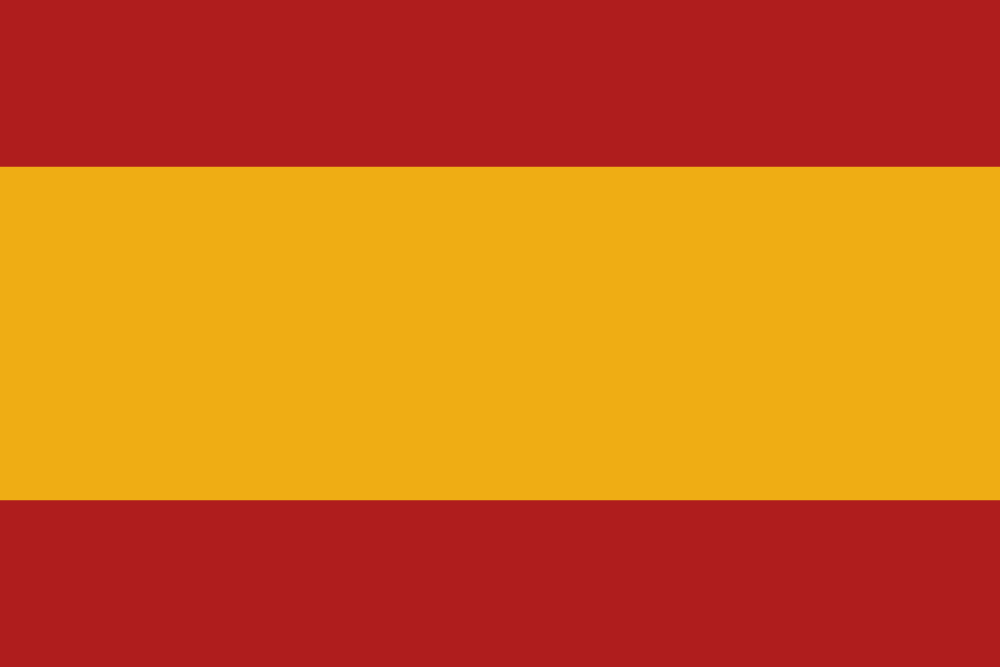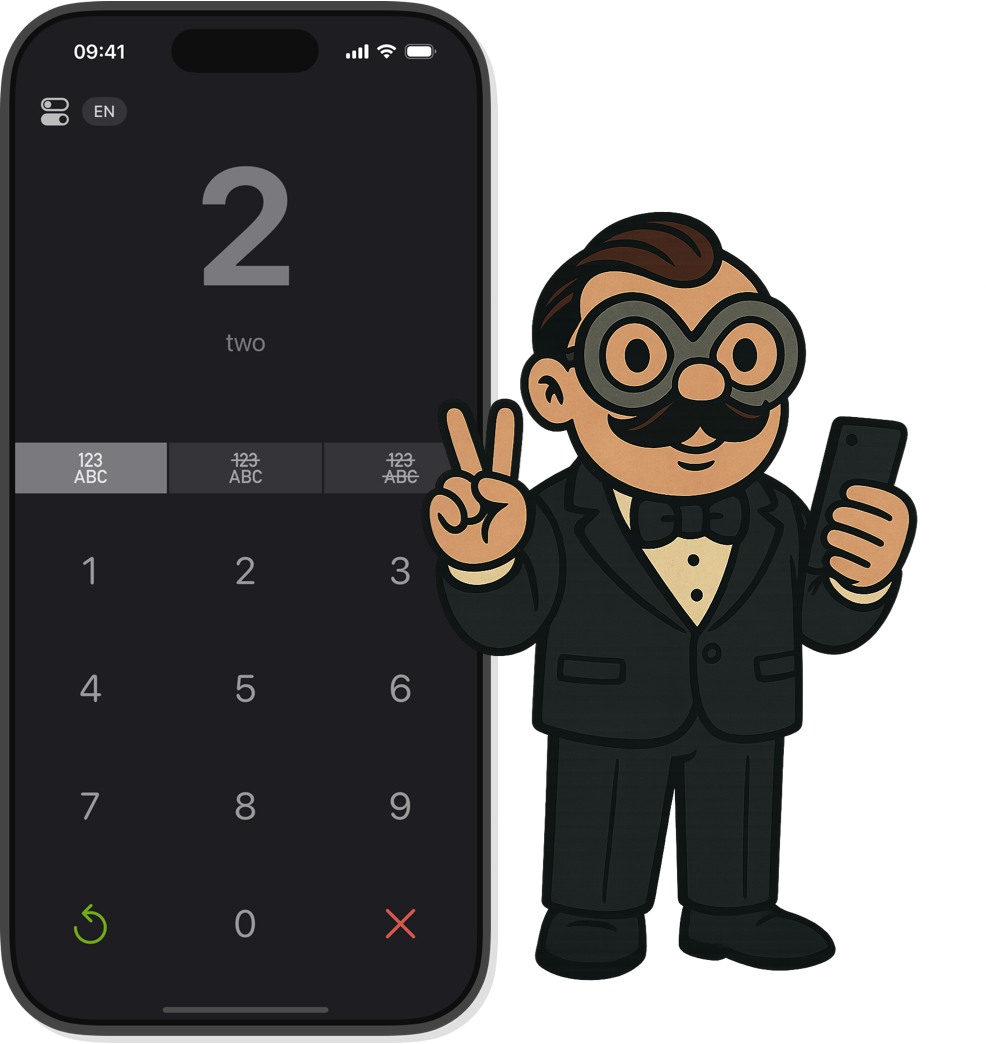Learn Spanish Numbers: From "uno" to "cien"
Spanish numbers are mostly logical, but the devil is in the details. Particularly, numbers 16-29 are written as one word (e.g., "veintidós"), which differs from numbers 30 and above ("treinta y dos"). This guide explains all the rules and exceptions so you can master Spanish numbers with confidence.


How Spanish Numbers Are Structured
The Spanish number system is very logical and regularly structured. Most numbers follow clear rules, with only a few exceptions among the basic numbers.
- 1-10
-
Basic numbers: uno, dos, tres, cuatro, cinco, seis, siete, ocho, nueve, diez
Regular basic numbers that must be memorized. Uno becomes una with feminine nouns.
- 11-15
-
Special forms: once, doce, trece, catorce, quince
These numbers have unique forms and don't follow a systematic pattern. They must be memorized.
- 16-19
-
Formation with "dieci-": dieciséis, diecisiete, dieciocho, diecinueve
Combination of diez + basic number, written as one word.
- 20-29
-
Special forms: veinte, veintiuno, veintidós, veintitrés...
The twenties are written as one word: veinti- + basic number. Veintiuno becomes veintiuna with feminine nouns.
- 30-99
-
Tens + y + basic number: treinta y uno, cuarenta y dos, cincuenta y tres
From 30 onwards, very regular: tens + y (and) + basic number. Written separately.
- 100+
-
Hundred: cien (100), ciento uno (101)
Cien stands alone for 100, ciento is used for 101-199.
Spanish Numbers 1 to 100
All Spanish numbers from 1 to 100 in overview. Perfect for systematic learning and quick reference.
Test Your Spanish Number Skills
Can you match these numbers correctly? How confident are you with Spanish numbers 1-100?
Pro tip: App for targeted number training. Did you know there's an app dedicated exclusively to numbers in foreign languages? With the Numfred app, you can specifically learn Spanish numbers.
Learn Spanish numbers with the Numfred App!
The app designed to help you master listening comprehension for numbers in foreign languages.
- Free basic number ranges
- Learn numbers in 13 languages
- No subscription. No registration.
- Ad-free
Hundreds, Thousands and Large Numbers
Here are the most important numbers and their formation:
- 100
-
cien
Standing alone: cien. In combination: ciento uno, ciento dos…
- 200-900
-
doscientos, trescientos, cuatrocientos, quinientos, seiscientos, setecientos, ochocientos, novecientos
Special forms: quinientos (not cincientos), setecientos (not sietecientos), novecientos (not nuevecientos)
- 1.000
-
mil
Thousand
- 1.000.000
-
un millón
1 million. Connected with de: un millón de euros
- 1.000.000.000
-
mil millones
1000 x 1 million = 1 billion
- 1.000.000.000.000
-
un billón
1 trillion
Common Pitfalls When Learning Numbers
Hearing or quickly pronouncing numbers can be challenging. These cases in particular often lead to confusion:
-
Gender agreement (uno/una):
veintiún años (21 years) vs. veintiuna personas (21 people). Numbers ending in 1 change form depending on the gender of the noun. -
Similar-sounding numbers:
sesenta (60) vs. setenta (70) – especially difficult to distinguish in rapid speech. -
Special hundreds:
Not cinco cientos but quinientos (500). Not siete cientos but setecientos (700). Not nueve cientos but novecientos (900). -
"Cien" vs. "ciento":
100 = cien (standing alone)
101-199 = ciento + number
Understanding and Using Numbers in Daily Life
In spoken Spanish, numbers are often pronounced quickly – especially with:
-
Time expressions:
Es la una = It's one o'clock
Son las dos = It's two o'clock
las dos y cuarto = quarter past two (2:15)
las dos y media = half past two (2:30)
las tres menos cuarto = quarter to three (2:45)
las cinco menos diez = ten to five (4:50)
las ocho y veinte = twenty past eight (8:20) -
Money amounts:
ocho euros con cincuenta céntimos = €8.50
veintitrés euros con veinte céntimos = €23.20
pasta, plata = money (colloquial)
Son quince euros. -
Years:
1492 → mil cuatrocientos noventa y dos
2010 → dos mil diez
2022 → dos mil veintidós -
Basic arithmetic:
7 + 5 = 12 → siete más cinco son doce
9 - 4 = 5 → nueve menos cuatro son cinco
3 × 3 = 9 → tres por tres son nueve
12 ÷ 4 = 3 → doce entre cuatro son tres -
Fractions and decimals:
½ → la mitad, medio
¼ → un cuarto
0.5 → cero punto cinco
2.71 → dos punto setenta y uno
Unique Features of Spanish Numbers
Spanish has certain linguistic conventions and unique characteristics when dealing with numbers – in spelling, pronunciation, and expression. Here's an overview of typical unique features:
-
Gender agreement in numbers:
Numbers ending in 1 agree with gender: treinta y un años (31 years, masculine) vs. treinta y una personas (31 people, feminine). Also with hundreds: doscientos hombres vs. doscientas mujeres. -
Number notation with periods and commas:
In Spanish, thousands are separated with periods, decimals with commas:
1.000,50 = one thousand comma fifty (Note: In English we write 1,000.50) -
Regional differences:
In some Latin American countries, billón is used as billion (following the US system), while in Spain it traditionally means trillion (10¹²). -
Numbers in colloquial speech:
In everyday speech, numbers are often shortened: cinco mil instead of cinco mil euros, or with slang: un palo = one million (in some countries).
Explore More Languages:


